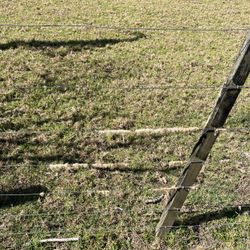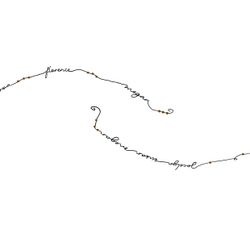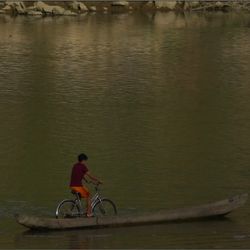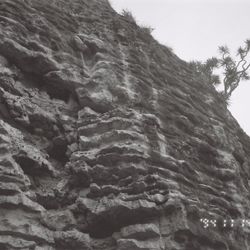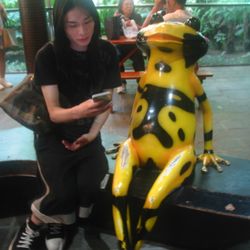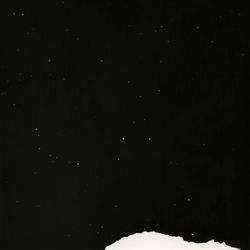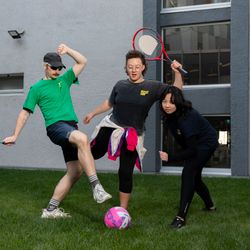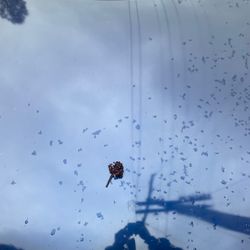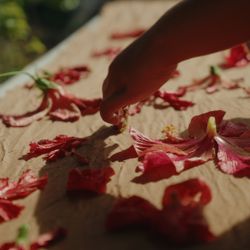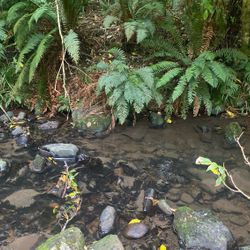Formations, presented as a series of glazed experiments with local rocks and materials applied to fired pottery, has been developed according to the movement of water relating to the land and landscapes of Ōtepoti.
Past Exhibition
Paraire 8 Pēpuere -
Hātarei 16 Māehe
Friday 8 February -
Saturday 16 March
2019
Image: Rebecca Steedman, Formations, 2018. Photo: Jonas Jessen Hansen.
Image: Rebecca Steedman, Formations, 2018. Photo: Jonas Jessen Hansen.
Image: Rebecca Steedman, Formations, 2018. Photo: Jonas Jessen Hansen.
Image: Rebecca Steedman, Formations, 2018. Photo: Jonas Jessen Hansen.
Image: Rebecca Steedman, Formations, 2018. Photo: Jonas Jessen Hansen.
Image: Rebecca Steedman, Formations, 2018. Photo: Jonas Jessen Hansen.
Image: Rebecca Steedman, Formations, 2018. Photo: Jonas Jessen Hansen.
Image: Rebecca Steedman, Formations, 2018. Photo: Jonas Jessen Hansen.
Image: Rebecca Steedman, Formations, 2018. Photo: Jonas Jessen Hansen.
Image: Rebecca Steedman, Formations, 2018. Photo: Jonas Jessen Hansen.
Image: Rebecca Steedman, Formations, 2018. Photo: Jonas Jessen Hansen.
Image: Rebecca Steedman, Formations, 2018. Photo: Jonas Jessen Hansen.
Image: Rebecca Steedman, Formations, 2018. Photo: Jonas Jessen Hansen.
Image: Rebecca Steedman, Formations, 2018. Photo: Jonas Jessen Hansen.
Image: Rebecca Steedman, Formations, 2018. Photo: Jonas Jessen Hansen.
Image: Rebecca Steedman, Formations, 2018. Photo: Jonas Jessen Hansen.
Image: Rebecca Steedman, Formations, 2018. Photo: Jonas Jessen Hansen.
Image: Rebecca Steedman, Formations, 2018. Photo: Jonas Jessen Hansen.
Image: Rebecca Steedman, Formations, 2018. Photo: Jonas Jessen Hansen.
Image: Rebecca Steedman, Formations, 2018. Photo: Jonas Jessen Hansen.
Image: Rebecca Steedman, Formations, 2018. Photo: Jonas Jessen Hansen.
Image: Rebecca Steedman, Formations, 2018. Photo: Jonas Jessen Hansen.
Image: Rebecca Steedman, Formations, 2018. Photo: Jonas Jessen Hansen.
Image: Rebecca Steedman, Formations, 2018. Photo: Jonas Jessen Hansen.
Image: Rebecca Steedman, Formations, 2018. Photo: Jonas Jessen Hansen.
Image: Rebecca Steedman, Formations, 2018. Photo: Jonas Jessen Hansen.
Image: Rebecca Steedman, Formations, 2018. Photo: Jonas Jessen Hansen.
Image: Rebecca Steedman, Formations, 2018. Photo: Jonas Jessen Hansen.
Image: Rebecca Steedman, Formations, 2018. Photo: Jonas Jessen Hansen.
Image: Rebecca Steedman, Formations, 2018. Photo: Jonas Jessen Hansen.
Image: Rebecca Steedman, Formations, 2018. Photo: Jonas Jessen Hansen.
Image: Rebecca Steedman, Formations, 2018. Photo: Jonas Jessen Hansen.
Image: Rebecca Steedman, Formations, 2018. Photo: Jonas Jessen Hansen.
Image: Rebecca Steedman, Formations, 2018. Photo: Jonas Jessen Hansen.
Image: Rebecca Steedman, Formations, 2018. Photo: Jonas Jessen Hansen.
Image: Rebecca Steedman, Formations, 2018. Photo: Jonas Jessen Hansen.
Image: Rebecca Steedman, Formations, 2018. Photo: Jonas Jessen Hansen.
Image: Rebecca Steedman, Formations, 2018. Photo: Jonas Jessen Hansen.
Image: Rebecca Steedman, Formations, 2018. Photo: Jonas Jessen Hansen.
Image: Rebecca Steedman, Formations, 2018. Photo: Jonas Jessen Hansen.
Image: Rebecca Steedman, Formations, 2018. Photo: Jonas Jessen Hansen.
Image: Rebecca Steedman, Formations, 2018. Photo: Jonas Jessen Hansen.
Image: Rebecca Steedman, Formations, 2018. Photo: Jonas Jessen Hansen.
Image: Rebecca Steedman, Formations, 2018. Photo: Jonas Jessen Hansen.
Image: Rebecca Steedman, Formations, 2018. Photo: Jonas Jessen Hansen.
We’re always swimming in the same river. Its peaks and shores crumble; the rocks erode, the humus mixes with the alluvial torrent, but not a single liquid molecule has gone missing in Garronne since the beginning of the world. Hard, the solid doesn’t last; only soft water lasts… this fluid evaporates, running everywhere in wandering clouds, but with the rumbling thunderstorm, here are the same snows, the same rains, the same waves, returned.1
Broad Bay, where the Caselberg Trust Cottage and Charles Brasch Studio lies is volcanic under the surface, a mixture of basalts and other lavas. Alongside are hints of industrial material, well-weathered hooks and fittings, quartz fragments and other oxidised material, and surprisingly clay—the result of severely weathered volcanic walls. Along nearby beaches such as Sandfly Bay, a large volcanic wall helps to trap fine grains of quartz which have likely washed down the Clutha River into the ocean, then to form large sand dunes in powerful winds.
Formations, presented as a series of glazed experiments with local rocks and materials applied to fired pottery, has been developed according to the movement of water relating to the land and landscapes of Ōtepoti with particular focus on Broad Bay, Sandfly Bay and Outram Glen as well as Tunnel Beach, St Kilda, Hoopers Inlet, and the Clutha River. Conversations with local geologist Dr. Nick Mortimer have helped form an understanding on the movement of water and its relationship with the surfaces of the landscape around it. For example, the Taieri River rocks, collected and crushed, are schist (with ancient beginnings as mud) with fine layers of quartz and melt into rusty looking glazes within the ceramic forms. According to Nick, the Taieri River moves all sorts of rocks. Most of the Taieri catchment is underlain by different kinds of schist, which explains the abundance of schist and quartz on the beach at Outram Glen. There are a very few tiny hilltops capped with Dunedin Volcano lavas, and some rare sedimentary rocks upstream, so a few of these can be expected at Outram Glen too.2
1 Serres, Biogea. (2012) Sea and River, Univocal Publishing, Minneapolis. p. 13/14.
2 email from Dr. Nick Mortimer 14 January 2019.
Rebecca Steedman is currently part of the RM Gallery and Project Space collective. She completed a Master of Fine Arts in 2007 at Elam School of Fine Arts, Auckland University and maintains an individual practice and is a full-time lecturer at Whitecliffe College of Arts & Design. Recent exhibitions include: Finding Ground, Meanwhile, Wellington, 2018; FREE SPEECH, Demo Gallery, Auckland, 2018; trasitionalfieldwork, a poster series in Boston Road, Mt Eden, Auckland 2017/2018; Building Stones, Window Online exhibition, 2017; Tectonic Crust Cake/ Calcite Future Aquatic, Window Gallery, 2016; transitionalfieldwork -36.8670511, 174.7597644, Demo Gallery, 2016.
